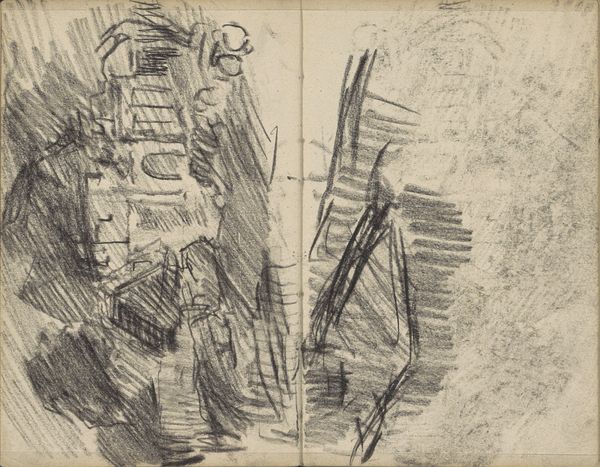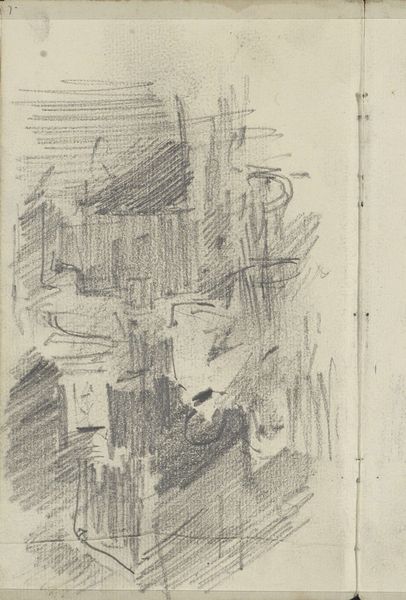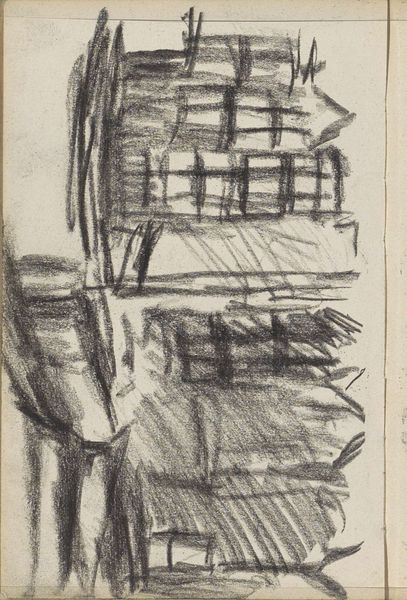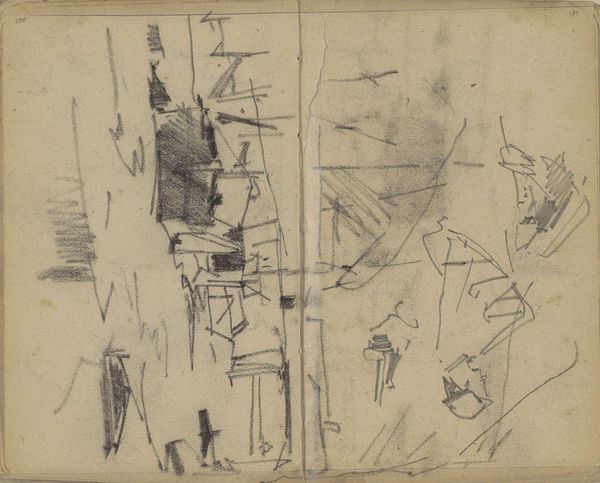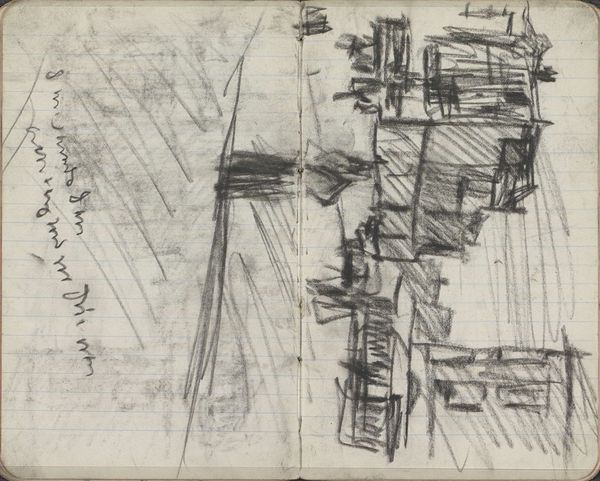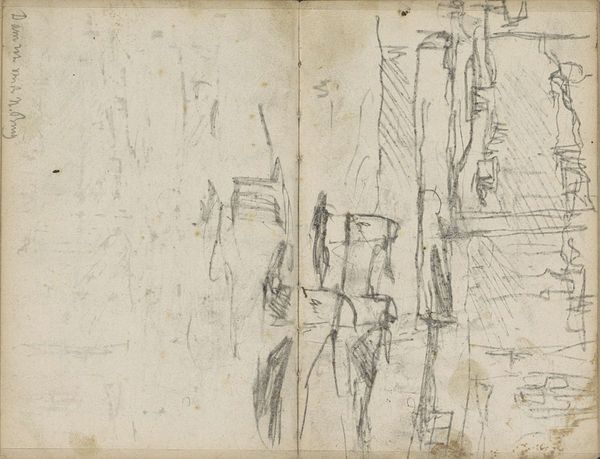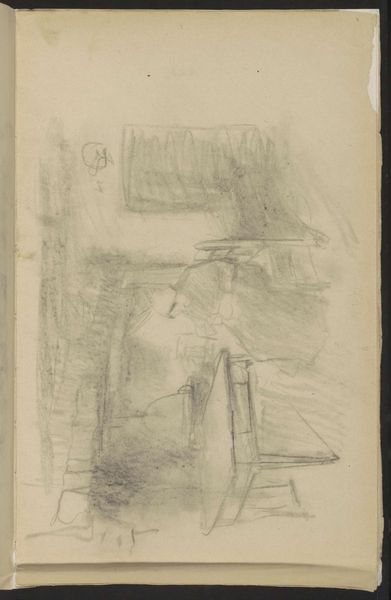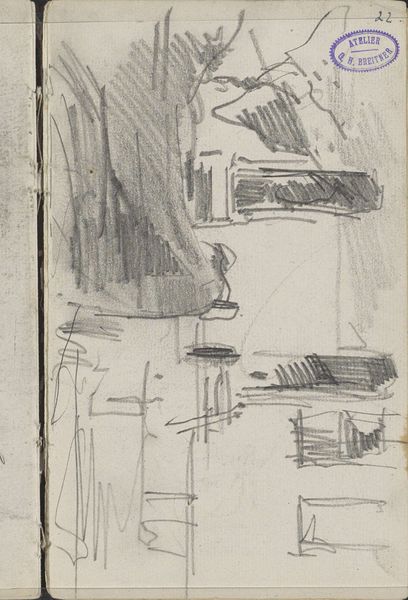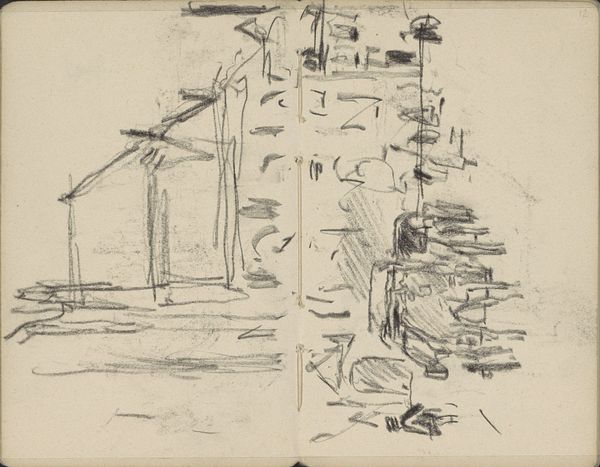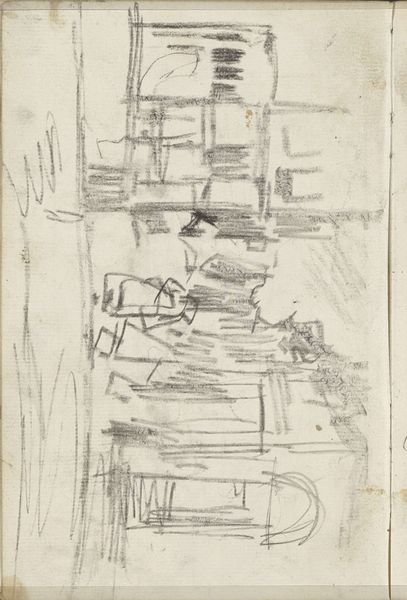
Gezicht op een gracht in Amsterdam, mogelijk de Lauriergracht 1896
0:00
0:00
georgehendrikbreitner
Rijksmuseum
Copyright: Rijks Museum: Open Domain
Curator: Standing before us is George Hendrik Breitner's "View of a Canal in Amsterdam, possibly the Lauriergracht," a drawing executed in 1896 using graphite. Editor: It's like a visual haiku. Minimal, yet conveying so much—a quiet, almost melancholic mood pervades the scene despite its sparseness. Curator: Absolutely. Breitner, a key figure in Dutch Impressionism, captured Amsterdam’s urban life, often focusing on the working class and the changing cityscape. What's fascinating here is his swiftness of line. We see this urgency even in his photographs of Amsterdam life. Editor: The hurried marks, the scratching quality... It's like he was trying to seize a fleeting impression before it disappeared. The dark, bold strokes indicating the water and perhaps reflections… What symbolic weight do you think he assigned to these urban waterways? Curator: The grachten, as lifelines and dividing lines of Amsterdam society, represented the commercial prosperity of the Golden Age. By Breitner’s time, though, these canals were seeing different kinds of industry, reflecting a class divide not necessarily of prosperity. Editor: And that's echoed in the buildings too, yes? Blocky shapes outlined hastily, there is such weight and mass to their geometry as shapes but also, like, in this moment frozen and somehow heavy as a historical representation. They seem less solid and more ghosts in the city. It also strikes me how few people are present; their absence is, symbolically, very present. Curator: Right, Breitner often focuses on the urban setting more than the people populating the location. So often the architecture becomes a mirror reflecting how its inhabitants are, as you pointed out, missing or, at least, removed from the scene. It underscores feelings of urban alienation or… Editor: Right—invisibility, perhaps? It's that quick sketch-like style coupled with his particular, very present social anxieties. He's immortalizing the impermanent. Curator: Precisely. It also calls to question the sustainability of progress and development; these are things that very much resonated in this area of Amsterdam at that time, just after the completion of the canals. The pace of urbanisation created, and still creates, so much disparity, if even indirectly. Editor: So, while seemingly just a landscape study, Breitner delivers us a potent distillation of cultural memory. Curator: Exactly. Breitner offers us an introspective encounter, beyond the picturesque appeal of Amsterdam.
Comments
No comments
Be the first to comment and join the conversation on the ultimate creative platform.


